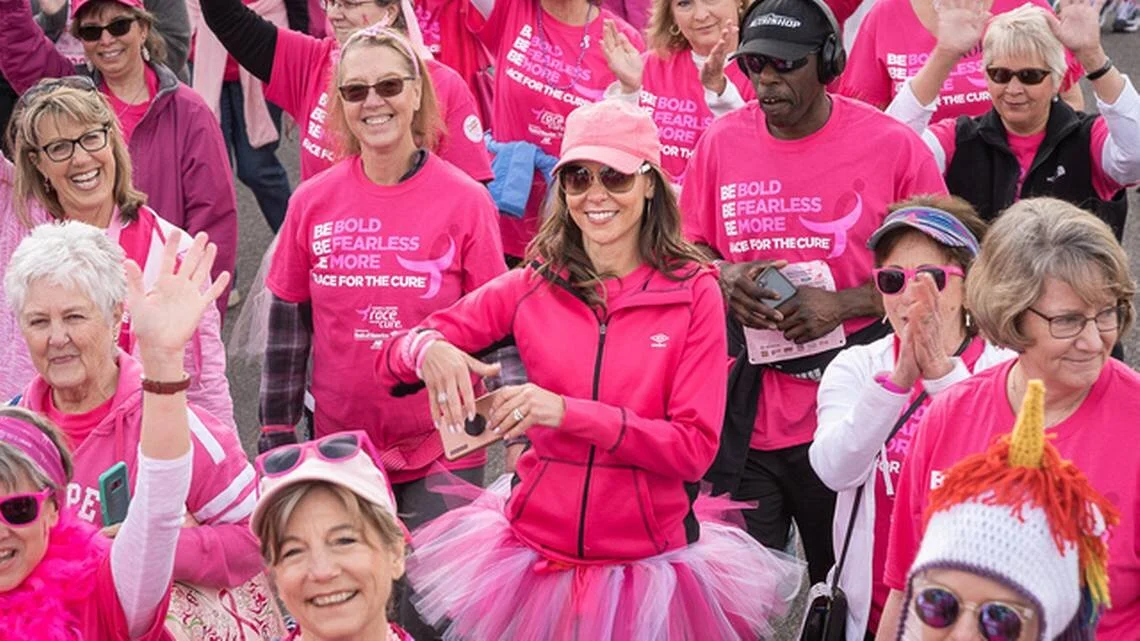Eastern Idaho Run for the Cure
Monarch Health Care ushered in Breast Cancer Awareness Month by hosting the Eastern Idaho Run for the Cure last Saturday at Freeman Park in Idaho Falls.
Locals ran the 5K to raise awareness and funds for more affordable treatment of breast and cervical cancer.
“It’s called Race for the Cure nationally,” said Mimi Taylor, a representative of Eastern Idaho Public Health and co-sponsor of the event. “So we changed it to Run for the Cure so we can keep all of our money locally.”
Proceeds are distributed to Eastern Idaho Public Health to support two of their core programs.
“The Women’s Health Check Program is a federally funded program that provides no cost mammograms and cervical cancer screenings to women,” said Taylor. “If they’re enrolled in the program and they’re diagnosed with either of those two cancers, it pays for their treatment.”
If women can’t qualify for the Women’s Health Check Program, the Mammography Voucher Program is offered to supplement mammography screening services for those women.
“But for some of the clients we see,” said Taylor, “they can’t even afford a $45 mammogram plus another $50 for the radiologist to read it.”
In the state of Idaho, a large gap exists among those who don’t qualify for government insurance subsidies and those who do. But by enrolling in Eastern Idaho Public Health’s Voucher Programs, Medicaid will offer federally funded screenings, diagnoses, and treatment at no cost, according to Taylor.
“If you’re enrolled in this program when you’re diagnosed,” said Taylor, “Medicaid has a special program that’s funded federally to pay for their treatment.”
According to Dr. Margaret Huggins of Monarch Health Care, one out of eight women are diagnosed with breast cancer in the state of Idaho. If a first degree relative is diagnosed, the chances are one out of four.
“I probably have a new diagnoses of breast cancer in my office at least every week,” said Huggins. “It’s one in eight in the state.”
Huggins said guidelines have changed according to the American Institute for Cancer, stating mammograms aren’t necessary until age 50 and above. But by waiting until 50, women may already be suffering from aggressive stages of early breast cancer at younger ages.
These programs allow residents to remain within their own communities when dealing with cancer prevention procedures.
“My providers are up on the latest of everything,” said Lisa Anderson, manager of the Teton Cancer Institute. “You can go further away and have this treatment, or be right here.”
Anderson continued by addressing the new 3-D Mammography technology offered by Eastern Idaho Public Health thanks to the funds generated by the event. This procedure allows doctors to detect cancer earlier than alternative methods.
“It’s a big community,” said Anderson, “and hopefully finding cancer earlier can help those to survive it.”
According to Michael Hall, event organizer from Personal Best Performance, each year has been more successful than the last. He believes the event accomplishes its goal every year, reaching more individuals about preventative measures promoted by the event.
“If you can find a program that will, at no cost, pay for your screening, your diagnosis, and your treatment,” said Taylor, “then there’s no reason you shouldn’t be enrolled other than not knowing.”

